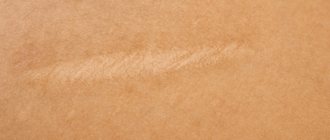Plastic surgery in the facial area allows you to get rid of various aesthetic imperfections caused by age-related changes, congenital or acquired defects. There are different types of operations, aimed at general external changes or only at a specific area. Depending on the type of correction, the amount of work, the degree of intervention and, as a result, the recovery period after plastic surgery differ.
Despite the differences, there are also common features of the recovery period that are characteristic of most types of surgery. The surgeon will tell the patient about the timing and details of rehabilitation at the first consultation. The patient’s main task during the recovery period is to follow all the recommendations and prescriptions of his doctor. Not only the recovery period, but also the quality of the postoperative result depends on the patient’s conscientiousness.
What should you expect after correction?
The main thing that the patient has to face is external consequences, primarily bruises and swelling. The appearance of bruising and swelling is inevitable for any operation, since tissue is damaged during any intervention. Therefore, you should not be afraid when you see bruises or swelling on your face - this is a normal phenomenon that accompanies any intervention in the postoperative period.
During this period, so-called “floating” swelling can also be observed, when in the evening there is a decline in swelling, and in the morning it appears again. Some patients do not easily accept this from a psychological point of view. The effect can last for several months. It is important to understand that the phenomenon is temporary and will gradually go away on its own.
The appearance of edema is an ordinary satellite of plastic correction.
The importance of psychological rehabilitation is undeniable
Psychological rehabilitation is also an important component of a speedy recovery of health. Surgery is a huge stress for the body, both physical and emotional. Everyone who has voluntarily decided to undergo a facelift, blepharoplasty or other manipulation is literally counting the days until the bandages are removed.
At the same time, the majority believes that the first results will be noticeable immediately. Therefore, every second person faces great disappointment when looking at his reflection in the mirror.
To maintain a positive attitude, the doctor:
- Focuses attention on those changes that the patient, due to lack of knowledge of the anatomy and physiology of the body, is simply unable to notice at first.
- Clarifies and dispels fears associated with a possible unsuccessful outcome of the procedure.
- Improves positive attitude using intimate knowledge of human psychology.
- Provides the patient with all the necessary information about how the operation will proceed and how long it will take to recover.
Receiving such support, it is easier for the patient to tune in to a positive mood. The absence of unnecessary worries, stress and negative emotions, in turn, is the best prevention of vascular spasm. Against this background, nutrition and tissue regeneration improves, wound healing is ensured without significant scarring and the recovery period is shortened. As a result, time flies by unnoticed, and only positive memories of the operation are retained!
Recommendations for recovery
In facial plastic surgery, rehabilitation, as in other areas of plastic surgery, plays a key role in obtaining a high-quality final result. To do this, the patient must adhere to all the prescriptions and recommendations of his surgeon, as well as discuss with him all potential problems and doubts, consult before taking medications or going to procedures.
To minimize the appearance of swelling, it is recommended to sleep on your back, first raising the head of the bed, in a semi-lying position. You can wash your hair 2-7 days after the intervention. You will need to adjust your diet by removing salt and hot spices, and it is also recommended to limit the consumption of solid foods, tea and coffee. You can use skin care cosmetics no earlier than a week after surgery. In this case, it is advisable to give preference to alcohol-free products.
Features of rehabilitation after different facelift methods
Recovery after a circular facelift
During the operation, the surgeon makes an incision in the skin along the hairline and removes excess skin. The procedure is performed under general anesthesia and lasts from 2.5 to 4 hours. The patient is observed in the hospital for 1-2 days.
Sutures are placed on the incision, which dissolve on their own after 2 weeks. Bandaging is performed 3-5 days after surgery. A compression bandage must be worn on the face for 7-10 days.
In the first days after the lift, swelling occurs in the suture area, pain of varying degrees of intensity, which is relieved with mild analgesics. As a rule, the doctor prescribes a course of antibiotic therapy. The patient may feel numbness of the facial skin, tingling, sensory disturbances, and tightness in the suture area.
The main rehabilitation - elimination of swelling, return of tissue sensitivity, relief from discomfort in the incision area - lasts about a month. After this, the person gradually returns to the usual rhythm of life. The final result of the operation can be assessed in about 6 months, when the facial tissues return to normal, the swelling finally goes away, and the stitches dissolve.
Rehabilitation after SMAS face and neck lift
During SMAS lifting, skin incisions are made from the front edge of the ear to the back of the head. Through them, the surgeon moves the muscular aponeurotic subcutaneous layer to the desired location and fixes it. During the operation, the patient is under general anesthesia. The duration of the procedure is from 2 to 4 hours.
The recovery period after SMAS lifting is similar to rehabilitation after a circular facelift. The patient spends 24 hours in the clinic under the supervision of doctors. If necessary, the doctor prescribes painkillers and antibiotics.
Upon discharge from the clinic, the surgeon determines the date of the follow-up examination and dressing, usually 3-5 days after the intervention.
After the operation, swelling of the face appears, which reaches a maximum on the 3-4th day. You will have to wear a compression bandage for 7-10 days, after which it can only be worn at night. There will be pain when chewing for about a week; during this period you need to eat liquid, soft or pureed food. After 2-3 weeks, the swelling subsides and the person returns to normal life with some restrictions. Full recovery takes from 2-3 months to six months.
Recovery period after endoscopic facelift
Endoscopic lifting, or frontotemporal lifting, is used to correct imperfections in the upper and middle thirds of the face, most often for lifting the forehead and eyebrows. The manipulation is performed through several small incisions under general anesthesia. The duration of the operation is 2-4 hours.
The rehabilitation period after endoscopic lifting is shorter than with circular and SMAS face lifting. Less damage to blood and lymphatic vessels leads to less pronounced swelling than with the methods described above. Less commonly, loss of facial skin sensitivity occurs.
After the operation, a bandage is applied to the stitches in the incision area. Patient management is no different from other cases of facelift - 1-2 days in the hospital, painkillers and antibiotics if necessary, appointment of a date for a follow-up examination and dressing.
Rehabilitation after thread lift
With the thread method, special threads with serifs are inserted under the skin of the face, by tightening which the surgeon fixes the soft tissues in the desired position. With local lifting, this type of lifting can be performed under local anesthesia.
If the procedure was carried out under local anesthesia, a disturbance in facial expressions is observed in the first hours after the intervention. This is a normal phenomenon; facial expressions will be restored after the anesthetic wears off. In the first day, swelling appears on the face, which can extend beyond the boundaries of the threads. Minor bruising in the puncture area is possible.
With thread lifting, there are no incisions on the face, the puncture sites are sealed with adhesive tape, and periodically they will need to be treated with an antiseptic.
The rehabilitation period after the introduction of threads ranges from 2 weeks to 1.5 months. In the first 2 days after surgery, it is important to monitor the tightening area and general condition - at this time, rejection of the threads may occur. By the end of the first week, swelling partially disappears, hematomas resolve. Uneven skin may remain. After 10-14 days, the swelling completely goes away, the skin smoothes out. After about a month, the threads are overgrown with connective tissue, the face is tightened, and the patient returns to his usual lifestyle.
What not to do?
As with other plastic surgeries, rehabilitation after facial plastic surgery imposes a number of restrictions. This is especially true for more traumatic types of correction - for example, for a circular lift. At first, physical activity and sports exercises are undesirable; you should also avoid lifting weights. You cannot visit the bathhouse, sauna, swimming pool, or take hot baths. You will need to avoid solariums and the beach for a while, and cover your scars from the sun when going outside.
Of course, these measures are not permanent, but only temporary, for the duration of the recovery. After the end of the recovery period, it is possible to return to normal life without restrictions and prohibitions. But if the patient wants a minimum number of difficulties during the rehabilitation period, subtle traces of the intervention and an overall high-quality result, then he must comply with all restrictions.
Rehabilitation procedures
Modern cosmetology offers many tools and techniques for restoring the body and appearance after surgery. The procedures have different principles of action and give different results, so it is important to correctly select the optimal set of measures to restore the body in a particular case.
In our clinic you can undergo effective recovery after plastic surgery under the supervision of experienced, qualified doctors. An individual rehabilitation program is drawn up and, if necessary, adjusted by clinic specialists, taking into account the specifics of the plastic surgery performed, as well as the health status and personal characteristics of the patient.
Our clinic offers a wide range of procedures to help restore the body after surgery and consolidate the results of plastic surgery. So, we can undergo the following procedures for quick and easy recovery after plastic surgery:
- microcurrent therapy;
- mesotherapy;
- gas-liquid peeling Jet Peel;
- biorevitalization;
- magnetic therapy;
- photodynamic therapy Revixan;
- plasmatherapy
Let's consider these procedures that help in rehabilitation after plastic surgery in more detail.
Microcurrent therapy
This technique is optimal for relieving post-operative swelling and reducing pain. The procedure involves exposure to low-frequency electrical impulses that help accelerate the regeneration of damaged tissue, improve metabolism and relieve inflammation.
Microcurrents, which provide a light lymphatic drainage effect, gently act on the epidermis, dermis and subcutaneous tissue, as well as on blood vessels and muscles. The procedure has an immunostimulating and anti-inflammatory effect. It also improves the processes of removing toxins and other harmful substances from the body and normalizes the functions of the sebaceous glands of the skin, which is especially important if facial plastic surgery has been performed.
Microcurrent therapy activates blood circulation and lymph flow, helps restore the skin's previous sensitivity after surgery and accelerates natural tissue regeneration.
Mesotherapy and biorevitalization
These procedures help restore cellular metabolism, stimulate blood circulation and thereby ensure rapid healing of damaged tissue.
In addition to medicinal substances, meso-cocktails include vitamins, various microelements and other beneficial substances that speed up healing, prevent the formation of unaesthetic scars and consolidate the effect of plastic surgery.
With biorevitalization, which involves the introduction of low molecular weight hyaluronic acid under the skin, the activation of regenerative processes and microcirculation begins, the skin becomes moisturized and becomes more elastic.
Both mesotherapy and biorevitalization significantly reduce the rehabilitation period after surgery, stimulate the production of your own collagen and effectively smooth the skin surface.
Gas-liquid peeling Jet Peel
Gas-liquid peeling is an excellent alternative to the above-mentioned mesotherapy and biorevitalization procedures. Peeling also helps speed up cell regeneration and tissue healing, increase blood and lymph flow, and nourish the skin with beneficial substances.
The peeling procedure is effective in the presence of swelling and scars. Thanks to gas-liquid peeling, rehabilitation after plastic surgery is much faster and more effective.
Magnetotherapy
The essence of the procedure is the therapeutic effect of a magnetic field that can improve metabolic processes in cells and stimulate regenerative and protective mechanisms in the body.
The magnetic therapy procedure improves blood circulation and provides a lymphatic drainage effect. In addition, magnetic therapy has a pronounced analgesic, regenerating and healing effect, and also relieves inflammatory processes in the body.
Photodynamic therapy
This procedure is based on the influence of light rays of different directions. Photodynamic therapy can be used after any plastic surgery, be it breast, body or facial plastic surgery, as well as after various invasive cosmetic procedures. In this case, the therapy program is selected by the doctor individually for each patient.
Photodynamic therapy stimulates cell renewal and ensures accelerated recovery of damaged tissue after surgery.
Plasma therapy
PRP therapy (plasma therapy) is an effective method of skin restoration after surgery.
PRP therapy stimulates the cell renewal process and also promotes rapid healing and restoration of the skin after plastic surgery. At the same time, plasma therapy activates the production of collagen and elastin by the skin, promotes rapid healing of scars and has an immunostimulating effect on the body.
You can learn more about the listed procedures and the rehabilitation process after plastic surgery in general from the specialists of our clinic.
Cosmetology and drugs
Cosmetic procedures or various medications can also help speed up recovery after facial plastic surgery. For example, to quickly relieve swelling and bruising, microcurrent or electrostatic lymphatic drainage is recommended. Ultraphonophoresis, plasma lifting and other procedures also work well.
Ultraphonophoresis is one of the procedures recommended after facial plastic surgery.
As for medications, at first the doctor may prescribe painkillers if the pain is too severe and causes significant discomfort to the patient. With open access techniques, antibiotics may also be prescribed to prevent the development of infection. Vitamins and medications that accelerate the resorption of bruises and the tightening of scars will be useful. But it is important to remember that self-prescribing medications or procedures is prohibited!
Early postoperative period
One of the main tasks of the early postoperative period is to help the formation of a new blood and lymph drainage system using “bypass routes” (the so-called collateral circulation). To achieve this task, physiotherapeutic procedures are actively used.
First of all, microcurrents and magnetic therapy are prescribed. Low-intensity infrared laser therapy – for 2-4 days.
From about 3-5 days you can add ozone therapy, quantum therapy, UHF, ultrasound. After the sutures have healed, iontophoresis and lymphatic drainage with movable electrodes can be added.
Terms of rehabilitation
The duration of the rehabilitation period varies depending on how complex and extensive the operation was performed. For example, an open lift, which involves tissue detachment under general anesthesia, will require a longer recovery period than an ultrasound lift without surgery.
It is very difficult to give exact dates, because, in addition to the type of operation, there are many other factors that influence the duration and complexity of rehabilitation. These are mainly the individual characteristics of the body, on which the period of tissue healing and general well-being at this time depend. The surgeon will indicate an approximate time frame after a more detailed study of the patient’s condition.
Complications
As mentioned, bruising and swelling during the recovery period are normal. But in some situations, immediate consultation with a surgeon is required:
- persistently high body temperature for several days,
- severe pain at the operation site,
- the appearance of rashes of various etiologies on the skin,
- suppuration at the suture sites.
These, as well as any other situations that raise doubts, suggest visiting your surgeon.
Depending on the severity of the condition, it is also possible to contact any specialized specialist, if it is not possible to visit a surgeon, or even call an emergency room. However, these complications are a fairly rare case and most patients are not at risk. To reduce the risk of complications, you need to contact a trusted clinic with qualified doctors.
Contraindications
Surgeries in the presence of chronic diseases are associated with high health risks. One of the important points preceding surgery is to clarify the patient’s health status and identify diseases for which surgery is contraindicated. If plastic surgery is planned, special attention requires: chronic diseases, systemic diseases, infectious diseases, foci of chronic infection, decreased immunity, liver diseases, cardiovascular pathology and some others.










